- News
- Reviews
- Bikes
- Accessories
- Accessories - misc
- Computer mounts
- Bags
- Bar ends
- Bike bags & cases
- Bottle cages
- Bottles
- Cameras
- Car racks
- Child seats
- Computers
- Glasses
- GPS units
- Helmets
- Lights - front
- Lights - rear
- Lights - sets
- Locks
- Mirrors
- Mudguards
- Racks
- Pumps & CO2 inflators
- Puncture kits
- Reflectives
- Smart watches
- Stands and racks
- Trailers
- Clothing
- Components
- Bar tape & grips
- Bottom brackets
- Brake & gear cables
- Brake & STI levers
- Brake pads & spares
- Brakes
- Cassettes & freewheels
- Chains
- Chainsets & chainrings
- Derailleurs - front
- Derailleurs - rear
- Forks
- Gear levers & shifters
- Groupsets
- Handlebars & extensions
- Headsets
- Hubs
- Inner tubes
- Pedals
- Quick releases & skewers
- Saddles
- Seatposts
- Stems
- Wheels
- Tyres
- Health, fitness and nutrition
- Tools and workshop
- Miscellaneous
- Cross country mountain bikes
- Tubeless valves
- Buyers Guides
- Features
- Forum
- Recommends
- Podcast
feature
 2023 Specialized Tarmac History
2023 Specialized Tarmac History The history of the Specialized Tarmac — every version of Specialized's 'one bike to rule them all' from 2003-2023
For 20 years, the Tarmac has been Specialized's designated 'do-it-all' road bike for racing, with a history of success in both the men's and women's World Tour. It was first introduced in the early 2000s, and has undergone regular updates to refine the geometry, materials and aerodynamics in an attempt to make it the best race bike out there, resulting in the new Tarmac SL8 that has finally been officially unveiled.
After plenty of leaked info and speculation, the ninth iteration of the Tarmac promises to be stiffer, lighter and faster than the previous version (as we've come to expect). After 20 years of progress, does the Tarmac SL8 have even the slightest resemblance to the original Tarmac? Let's take a look at how this classic bike has changed with the times over the last two decades, sticking with the top-of-the-range model for each of the revamps the bike has been through since 2003...
S-Works Tarmac E5 (2003)
In 2003, Specialized introduced the first generation of its world-renowned Tarmac, the E5. It was designed to be a road racing bike and featured a half aluminium, half carbon fibre frame. Yep, half aluminium and half carbon fibre!
The Tarmac E5 was a breakthrough bike for Specialized, and it tried to combine the stiffness of aluminium with the weight saving of carbon in an attempt to build the ultimate race bike, for its time. However, due to the stiff aluminium backbone, it was said to be uncomfortable to ride.
Despite this, the original Tarmac stood out amongst other race bikes of the time thanks to its arched top tube, which remained virtually the same until 2015.
S-Works Tarmac SL1 (2006)
The Tarmac SL1 acted as a blank canvas for Specialized, designed to rectify the harsh ride of the E5.
There were no major changes to the frame design of the E5, but this was the first full-carbon Tarmac using FACT (Functional Advanced Composite Technology) 8r carbon fibre.
Specialized had signed as the bike supplier for the Quick-Step team ready for the 2007 season, and received feedback on the SL1 from the 2005 road race world champion Tom Boonen.
S-Works Tarmac SL2 (2008)
The Tarmac SL2 was a massive leap forward for Specialized, as it was considered to be the first Tarmac that was "both comfortable to ride and formidable to race".
Specialized gained valuable insights from real-world testing with Boonen, and redesigned the rear stays to improve stiffness. This included adding size-specific chain stays, as prior to this the same parallel tubes were used to fit each size. This didn't allow for size-specific tuning.
This new approach to designing bikes for Specialized was codified in 2012 as the 'Rider First' initiative, which attempted to deliver the same ride quality for every rider through different stiffness targets for each frame size.
S-Works Tarmac SL3 (2010)
> Tour de France-winning yellow bikes — the celebratory winners' bikes from 2010-present rated
The Tarmac SL3 won the Tour on its debut. Despite it looking rather similar to the SL2, changes were made to the construction of the bike to increase stiffness and decrease weight.
Specialized built the frame in four different monocoque units. The top tube, head tube and down tube, the seat tube, the seat stays, and the bottom bracket and chain stays. The carbon fibres in each of these sections ran continuously, helping dial in stiffness and strength while keeping the weight low.
There’s more internal ribbing near the junction between the head tube and the down tube for greater stiffness there, while elliptical seat stays were designed to add rigidity to the rear triangle without making the ride too harsh.
This resulted in a bike that was 150g lighter than its predecessor, with a claimed 18% increase in rear stiffness.
S-Works Tarmac SL4 (2011)
> Tour tech – Sneak peek at the new Specialized Tarmac SL4
Only 12 months after Specialized unleashed the Tarmac SL3, a new model - the SL4 - was rolled out, boasting a 19% increase in stiffness-to-weight ratio. Reports also suggested that the frame itself was about 50g lighter than the SL3.
The SL3 used Specialized’s Cobra head tube design, where the top tube and down tube partially wrap around the tapered head tube. Designers took things further with the SL4 to produce the King Cobra design, which claimed to be stiffer, stronger and lighter too.
There was also a new fork and wider seat stays, plus one-piece chain stays and bottom bracket. This approach stiffened the back of the bike up, according to Specialized.
S-Works Tarmac SL5 Disc (2015)
2015 was the year that Specialized started over again, with a long overdue replacement for the SL4. This was also the first time that a Tarmac had been offered with disc brakes.
On the surface, it looked like little had changed on the SL5 except for the addition of disc brakes - however, the whole frame was changed and engineered from the outset with disc brakes in mind.
One clear difference was the new integrated seat clamp, as well as a more aero down tube and a straighter top tube. There was a beefier layup for these disc brake models too, but Specialized kept the weight increase to a minimum with a claimed 80g increase for the disc brake frame over the standard Tarmac.
Specialized said that this new frame design improved the handling and responsiveness, without sacrificing stiffness or adding any extra weight.
S-Works Tarmac SL6 (2019)
The sixth generation Tarmac saw some substantial changes, with a focus on reducing weight, improving comfort, frame stiffness and, for the first time since the original Tarmac, added aerodynamics.
The fork blades were slim, the seat stays dropped further down the seat tube and there was a D-shaped profile for the seat tube and seatpost. The rear brake was also tucked lower down out of the airflow.
Prioritising aerodynamics usually means a weight penalty, but the SL6 was claimed to be as aero as the original Venge, a dedicated aero bike, yet far lighter than any dedicated aero bike at the time.
200g had been shed from the previous version, and the claimed weight for a 56cm frame was 733g.
S-Works Tarmac SL7 (2021)
The Specialized Venge, Specialized's dedicated aero bike, was discontinued for 2021, because Specialized believed that there was no longer a need to have both an aero road bike and a lightweight road bike in its range. The Tarmac SL7 was 'one bike to rule them all', boasted the big S in the summer of 2020.
Claiming to be 45secs faster over 40km than the Tarmac SL6, Specialized said it targeted the tubes that truly impact the aero performance of the frame and used the "fastest components" such as the SL7 Aerofly II handlebar, borrowed from the Venge.
This was the year that the Tarmac ditched rim brakes, with all models available with hydraulic disc brakes only, and now had fully hidden brake hoses and cables.
S-Works Tarmac SL8 (2023)
> Specialized officially launches the Tarmac SL8
After weeks of speculation, the Tarmac SL8 has finally had its official launch. Specialized boasts that it's not only its fastest Tarmac ever, but "the world’s fastest race bike" full stop, combing aerodynamics, lightweight and superior ride quality.
It shares plenty of similarities with the current Specialized Tarmac SL7, such as identical geometry and 32mm tyre clearance, but the front end is where we can the biggest difference to the SL7, particularly the deep nose cone - the Speed Sniffer, which is said to deliver a much lower drag.
Specialized says that the SL7 has a 33% higher stiffness-to-weight than the SL7 and is 15% lighter with a claimed weight of 685g for the frame.
It is also said to be 6% more compliant than the SL7 in its quest to improve ride quality.
Which is your favourite Specialized Tarmac? Let us know in the comments as always.
Emily is our track and road racing specialist, having represented Great Britain at the World and European Track Championships. With a National Title up her sleeve, Emily has just completed her Master’s in Sports Psychology at Loughborough University where she raced for Elite Development Team, Loughborough Lightning.
Emily is our go-to for all things training and when not riding or racing bikes, you can find her online shopping or booking flights…the rest of the office is now considering painting their nails to see if that’s the secret to going fast…
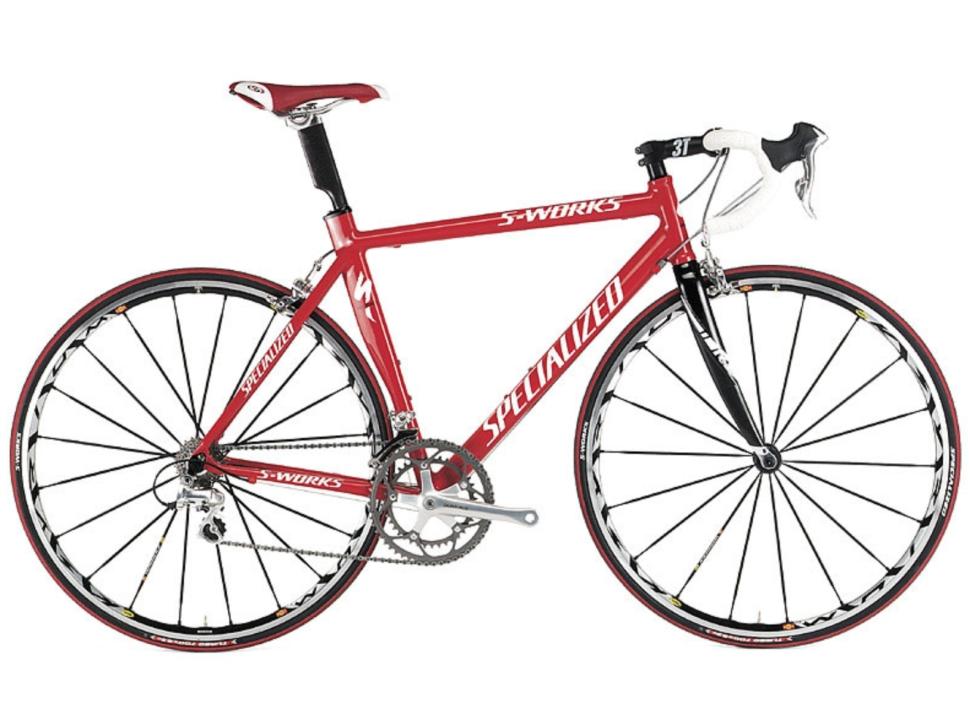
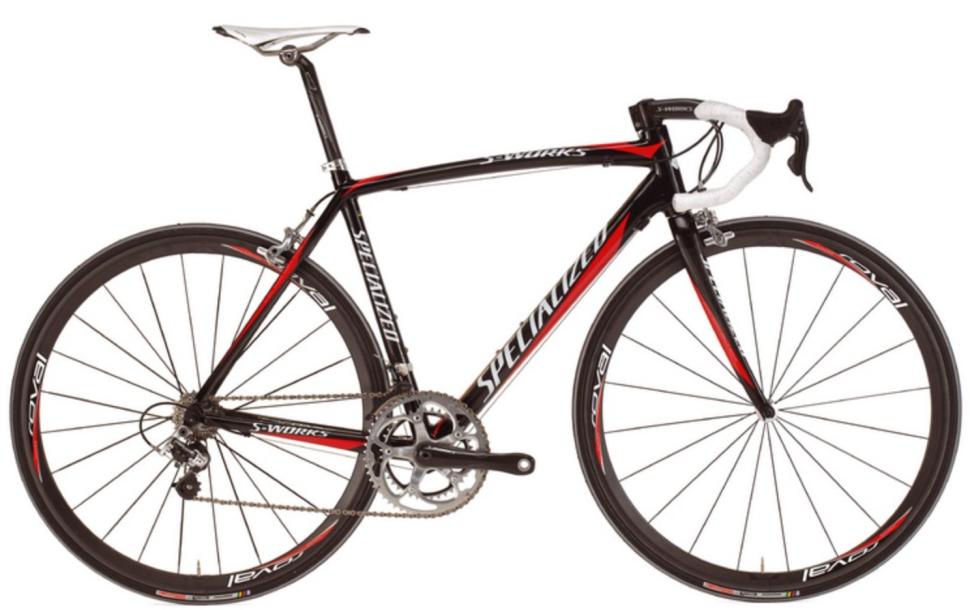
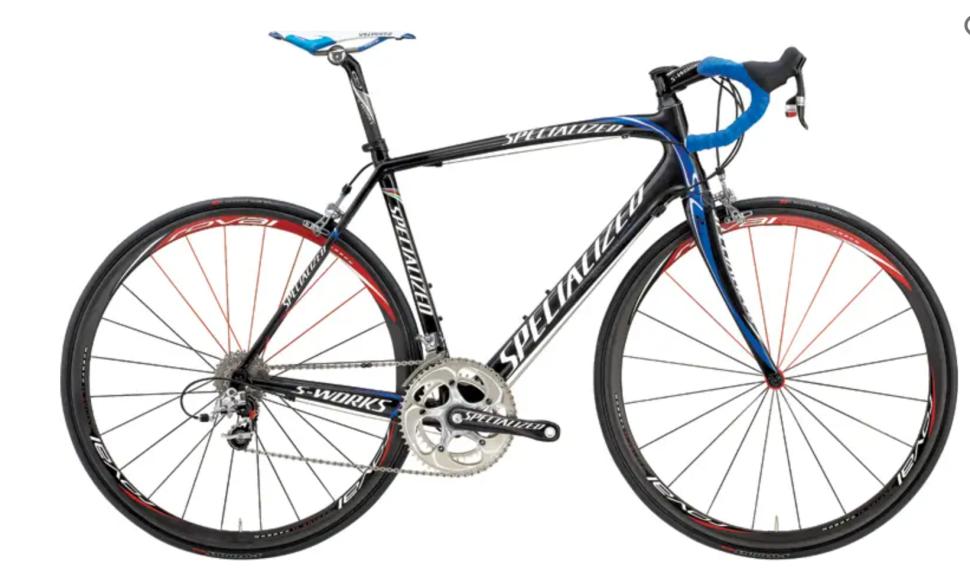



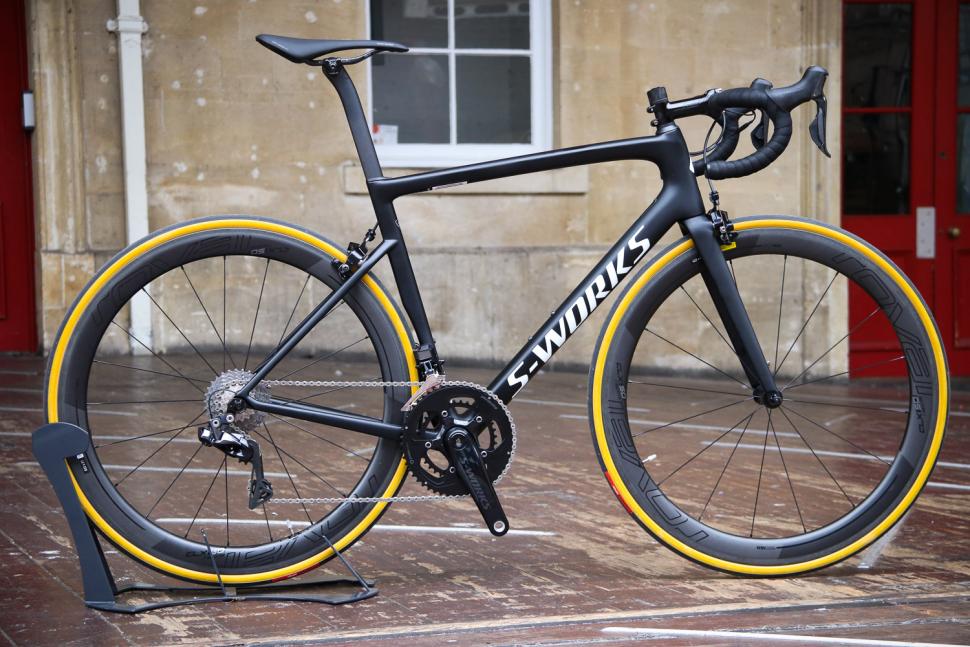

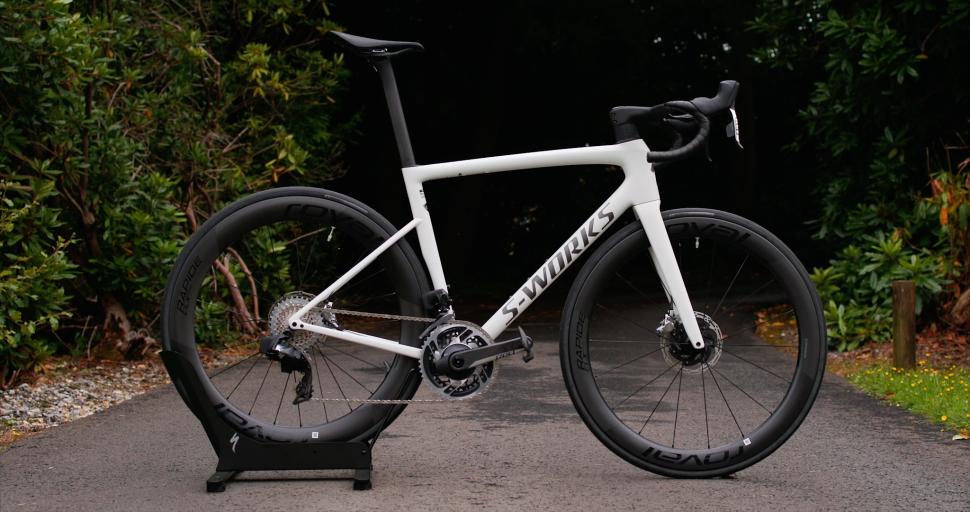
Let's see links to all the outrage posts you've made about others - including truck drivers - that have been in this situation....
I got their email last night. Read it. No idea what it said. The gist of it appeared to be providing the exciting spectacle of elite racing and...
I pray Wiggins has found peace and happiness; he was a great cyclist, no one can take that away from him. And a huge thanks to Lance Armstrong for...
geeze....but a carbon fork, huh ? they should provide a rim brake option for us oldtimers who have matured to having more disposable income than...
so, instead of having both hands on your brakes controling your steering and being ready to avoid a collision, you now are required to imperil...
It's easy to remove the pipe from the fasteners which are C shaped so able to hold but not trap the pipe. Filtering through traffic is then...
What was on offer only 2 weeks ago was either 'world' for £20 or tiny areas such as 'Blackpool area' for £5 each or something. You couldn't just...
“fastest, lightest, and most durable road tyres yet” Yeah right. "Strong, light, cheap. Pick two."
Surely a penalty notice will have been delivered by now, which will state where the car is parked?